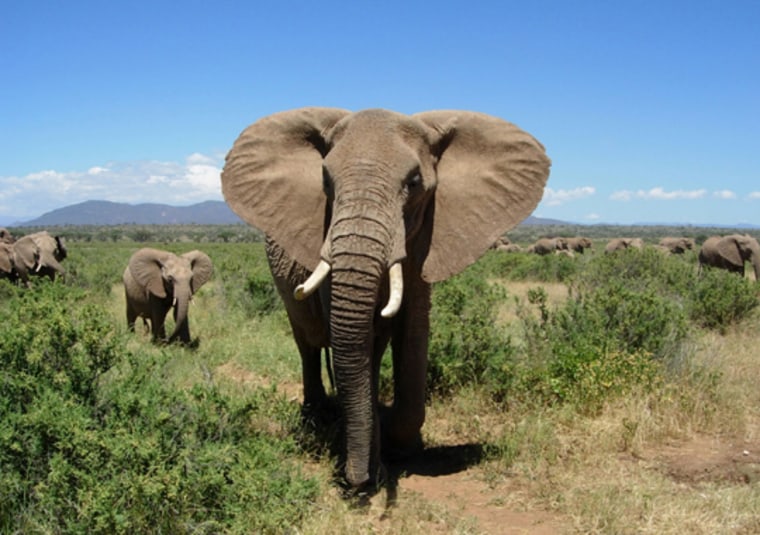Human friends and relatives keep tabs on their loved ones by phone when they're apart, and now new research shows elephants do nearly the same thing with rumble vocalizations that can transmit over one and a half miles.
The finding helps to explain how elephants almost always find their way back to their herd, even after they wander far off.
Elephants can see and smell their fellow herd members over long distances too, but visual obstructions, such as rocks, trees and even other big animals, can block their views, while wind changes and smells can compromise odor detection.
"The auditory system seems to provide a method to detect and communicate with individuals over both long and short distances, and we know that individuals can use auditory information to determine the location and identity of herd members," lead author Katherine Leighty explained to Discovery News.
Leighty, a behavioral ecologist at Disney's Animal Kingdom in Florida, and her team conducted the first systematic study of spontaneously produced elephant rumble vocalizations. These are typically infrasonic calls, with frequencies between 13 and 35 Hz, which fall outside the range of human hearing.
Their test subjects were five unrelated adult female African elephants at the spacious Disney Bay Lake site. Each elephant was outfitted with a GPS system and recorder attached to a collar made out of fire hose.
Like a person answering a phone call, elephants that detected a rumble would often rumble back, the scientists discovered. But the elephants were more inclined to answer if they had a close affiliation with the caller.
In fact, associations in the herd read like almost a MySpace page with trains like this: Fiki is friends with Thandi who, in turn, often hangs out with Moyo. Moyo and Fiki get along most of the time, but Moyo hardly ever associates with Donna and Vasha.
In addition to influencing elephant responses, these kinds of associations also affected approach behaviors, with closely affiliated elephants tending to move toward each other during rumble exchanges.
The elephants sometimes even appear to blow off detected rumbles.
"It could be similar to when a person overhears another speaking," Leighty said. "They may not respond, but that doesn't mean it was not heard."
Iain Douglas Hamilton, a leading authority on elephants and founder of the charity Save the Elephants, believes the paper, which has been accepted for publication in the journal Animal Behavior, represents "a significant advance in our understanding of elephant communication and a building block towards a wider understanding of how individuals interact to make group decisions."
Hamilton was also interested to learn from the finding that the further apart two affiliated elephants were, the stronger their rumbles became.
"This accords with what we see in the wild, that the longer individuals have been separated, the stronger the greeting ceremony when they come together, in which deep rumbling plays a significant role," he said.
Leighty and her team are already planning future studies on elephant infrasonic vocalizations, such as investigating why elephants do or don't respond to a friend's rumblings.
